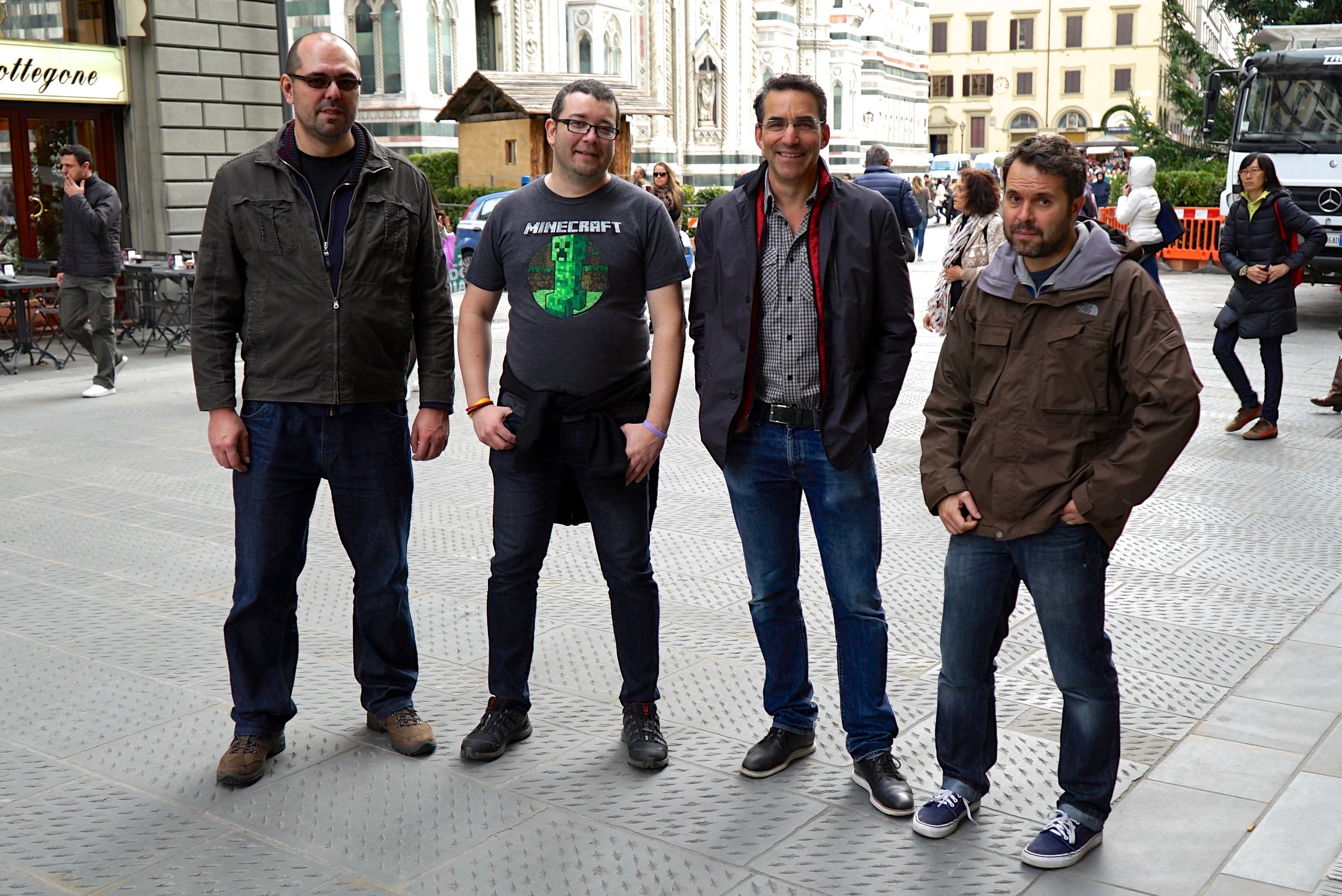Great things in business are never done by one person. They're done by a team of people.
-Steve Jobs
The idea for Trint was first hatched at the Mozilla Festival in London, an annual coding conference in London that showcases cutting-edge media innovation. It was November 2013; Mark Panaghiston, Mark Boas and Laurian Gridinoc were previewing a prototype of software that linked manually transcribed text to its source audio. It was a new concept in both audio and transcription: they found a way to glue a piece of text on the screen to its source audio file, stitching each word of a transcript to the exact time that word was spoken.
The trio of developers was introduced to Jeff Kofman. Jeff was still working as ABC News London Correspondent but he was also teaching a university course on 21st century journalism, which was why he was attending Mozfest. He immediately took an interest in the technology the team was demonstrating. Jeff asked Laurian if automated speech-to-text could be added to the software along with some way of correcting the machine-generated errors. If so, they could turn the world of tedious, time-consuming and costly manual transcription on its head.
'It's an interesting idea,' said Laurian. 'We could try it.'
'I felt like I was looking at the future,' Jeff remembers. 'It was a real light bulb moment. I remember saying to the guys, 'This is what the future is going to look like. We can get together and see if we can make it work, or we go our separate ways and one day a few years from now one of us will walk into a coffee shop and see someone working on a platform like this that automates transcription.''
That chance encounter began a journey into entrepreneurship, invention and the world of startups.
Throughout the next year, the four kept in touch as they experimented with developing the idea. Their first test with automated speech-to-text showed real promise.
They assembled again at an AirBnB in Florence, Italy in December 2014. They spent the next two weeks brainstorming. To help the team understand the problem they were trying to solve, Jeff arranged a series of a dozen Skype calls to U.S., Canadian and British journalists, editors and newsroom technology managers.

The Trint Originals in Florence - December 2014
L to R: Mark Panaghiston, Laurian Gridinoc, Jeff Kofman, Mark Boas
The four knew they were onto something after a Skype call with a senior vice president at CNN. 'You are focused on our single biggest technological challenge,' he told them. At the time CNN had upwards of 100,000 hours of recorded content coming into their servers every week, most of it interviews, speeches and news conferences, and most that without transcripts. To find what was actually said on that video it would have to be manually transcribed - a staggeringly inefficient process.
'We would love to see you guys succeed and help us automate the transcription workflow,' said the CNN VP on that call, 'but it's important that you understand: we won't touch automated speech-to-text until we know it won't burn us. We need to know we have transcripts we can trust.'
Transcripts You Can Trust: that became the team's rallying cry as they set out to launch a technology revolution.
They spent 21 months developing, testing and evolving a prototype into a series of betas. On September 5th, 2016, Trint was launched as a commercial product. The next phase of Trint's journey was just beginning.
Since then Trint has grown into an essential part of the workflows of individuals and businesses, saving time and money for thousands of people, and making it easier for them to find and disseminate their content.
Your journey with Trint starts with a free trial. Sign up now to experience all that Trint has to offer!